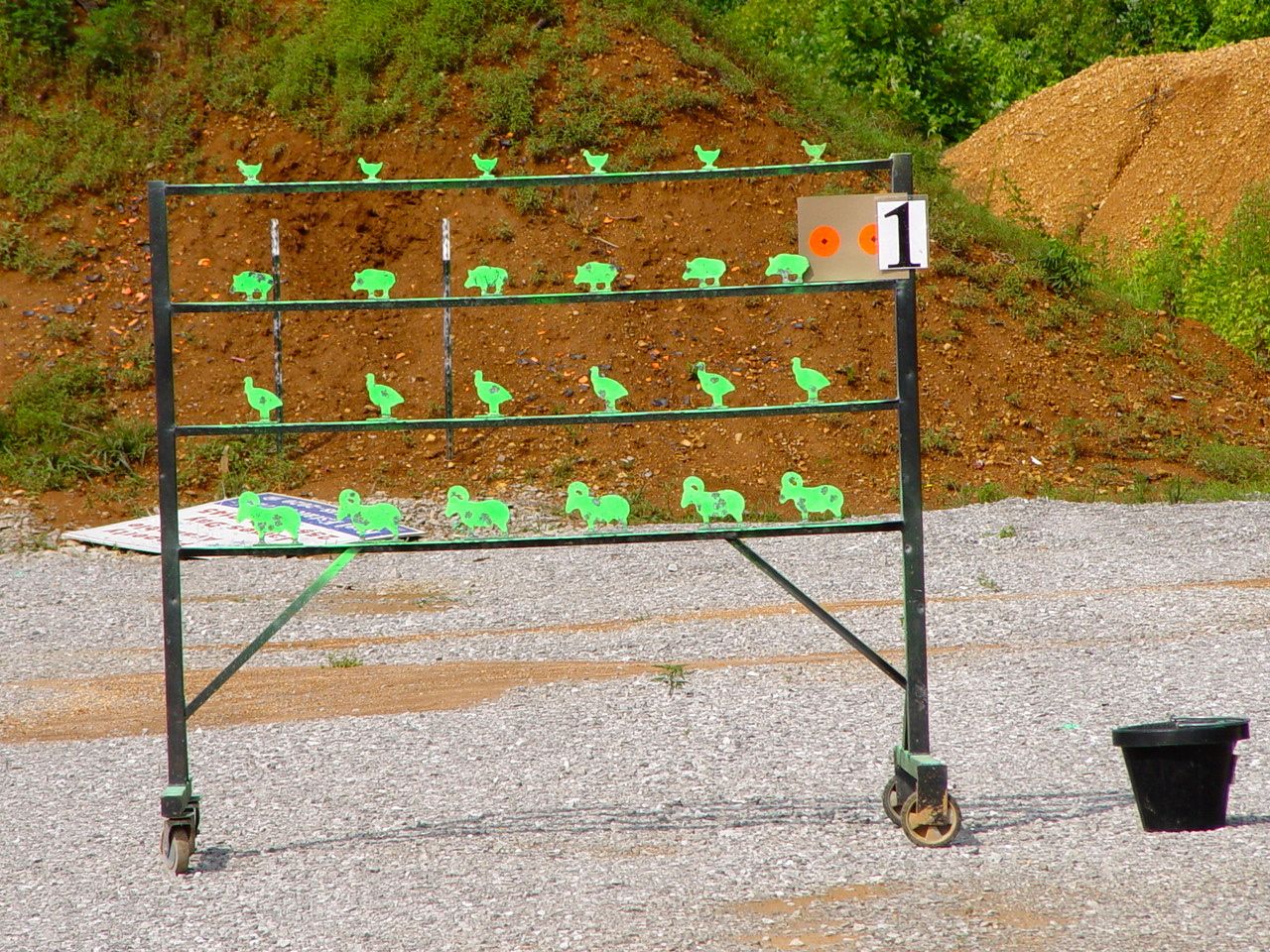Don't be scared of .......
thinking outside of the box when it comes to shooting.
Over the weekend, I remembered how a big guy would shoot his bolt action .22 rifle in the early variants of our rapidfire matches (back in the early 90s). He was inspired by the British Army's rapidfire technique of shooting their SMLEs.
I practiced it today on a rack or two at the range. Whoa, Nellie! It works:
I am holding the bolt handle knob with my thumb, pointer finger, and index finger, and I'm just touching off the 13 oz CZ trigger with my ring finger (obscured in the photo). I was shocked by both the speed and accuracy I was getting.
Actually, I have issues with shooting this light triggered rifle in the normal way. The trigger was modified with a Brooke's Kit, and it yields a light pull but not a crisp one. It is light and soft (not creepy, just soft). Thus, I tend to have a tendency to snatch it off when shooting using my pointer finger and pull the shot. For whatever reason, it actually seemed more natural with the ring finger today. Go figure.
The friendly little local competitiion I intend to try it in is this Saturday. We call it the Rapidfire Rimfire Match. This is the steel silhouette setup we shoot at from a distance of 25 yards:
I put the little cardboard card up with dots on it for sighting in on a practice day. It is not usually there.
A shooter engages the rack of targets in four strings - rams, turkeys, pigs, and finally the dastardly little chickens. An RO instructs the shooter to load and make ready. After a "fire when ready" command, the shooter starts when reasonably ready. The RO starts a stop watch with the first shot and then stops it when the last standing animal in a string is down. The RO calls out the time to a scribe and the scribe records the time. If a shooter goes six for six (no misses on a string), he/she get's a three second deduction as an accuracy bonus. The shooter's score is his/her aggregate time for all four strings less any accuracy bonuses. The RO moves down the line after the first shooter finishes with a string. After all four shooters (we have four racks) have completed the same string of critters, the RO comes back to the first shooter, and they repeat the drill for the next string of silhouettes. The shooter loads and readies his/her rifle as soon as he/she completes a string and the RO has moved down the firing line to the next shooter. The shooter engages the safety or leaves the bolt back, and lays the rifle flat on the bench. They pick it up after the RO cycles back to him/her, and the shooter prepares to fire on command. Thus, things keep moving smoothly and safely.
There are two classes - scope/aperture sights and open sights. The game is dominated by semi-autos. However, if one wants to compete with a manual repeater, we have compensating time deductions:
semi-auto = zero
pump = 18 seconds (deducted from the shooters aggregate time less any accuracy bonuses)
lever = 24 seconds
straight pull bolt action = 30 seconds
conventional bolt action = 36 seconds
I won last month shooting the above pictured CZ 452 American. But, some good semi-auto shooters
crashed and burned. Thus, I lucked up. I am trying to grease things up a little further in anticipation of the talent that will attend this weekend. To first timers, I always say, "You can't miss fast enough to win. So, take aim and get hits."
 20 mph kiddy wampass direction
20 mph kiddy wampass direction


